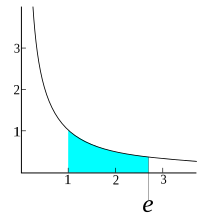
Photo from wikipedia
Background: To investigate the correlation between corneal biomechanical characteristics (in vitro and in vivo) and corneal densitometry in myopia. Methods: The Pentacam (Oculus, Wetzlar, Germany) corneal densitometry (CD) and Corvis… Click to show full abstract
Background: To investigate the correlation between corneal biomechanical characteristics (in vitro and in vivo) and corneal densitometry in myopia. Methods: The Pentacam (Oculus, Wetzlar, Germany) corneal densitometry (CD) and Corvis ST (Oculus, Wetzlar, Germany) exams were conducted prior to surgery for myopic patients who were intended to undergo small-incision lenticule extraction (SMILE). CD values (grayscale units, GSUs), and in vivo biomechanical parameters were obtained. The stromal lenticule was subjected to a uniaxial tensile test to obtain the elastic modulus E in vitro. We exam the correlations among in vivo, in vitro biomechanical characteristics and CD values. Results: In this study, 37 myopic patients (63 eyes) were included. The mean age of participants was 25.14 ± 6.74 years (range:16–39 years). The mean CD values of the total cornea, anterior layer, intermediate layer, posterior layer, 0–2 mm region and 2–6 mm region were 15.03 ± 1.23 GSU, 20.35 ± 1.98 GSU, 11.76 ± 1.01 GSU, 10.95 ± 0.83 GSU, 15.57 ± 1.12 GSU and 11.94 ± 1.77 GSU, respectively. Elastic modulus E (in vitro biomechanical indicator) was negatively correlated with intermediate layer CD (r = −0.35, p = 0.01) and 2–6 mm region CD (r = −0.39, p = 0.00). A negative correlation was also found between 0-2 mm central region CD and in vivo biomechanical indicator SP-HC (r = −0.29, p = 0.02). Conclusion: In myopic patients, densitometry is negatively correlated with biomechanical properties both in vivo and in vitro. With an increase in CD, the cornea deformed more easily.
Journal Title: Frontiers in Bioengineering and Biotechnology
Year Published: 2023
Link to full text (if available)
Share on Social Media: Sign Up to like & get
recommendations!